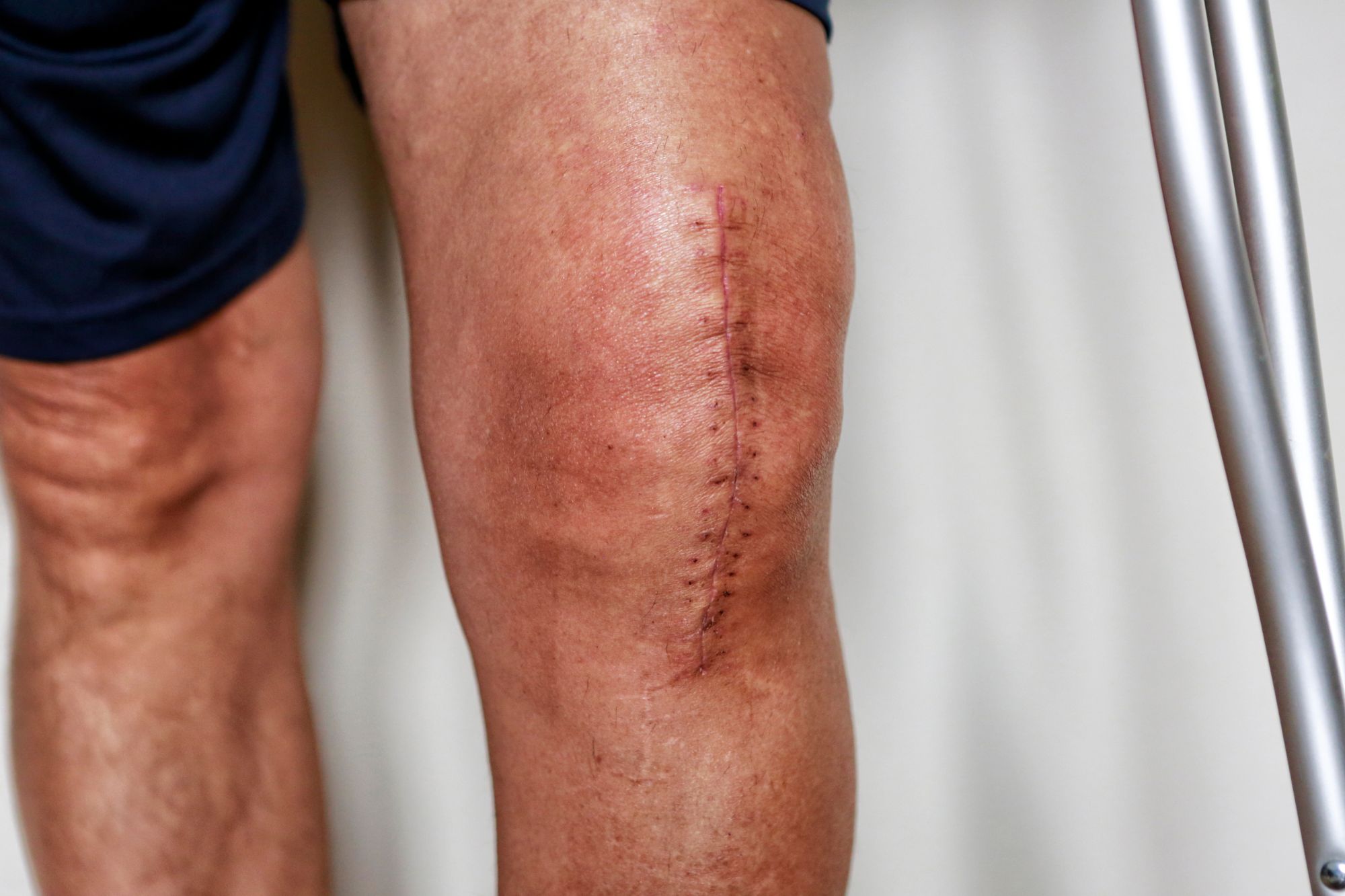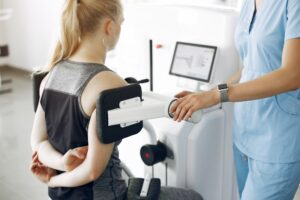The knee is the largest joint in the body and it is also one of the most complex. The knee joint is made up of four bones, which are connected by muscles, ligaments, and tendons. The femur is the large bone in the thigh. The tibia is the large shin bone. The fibula is the smaller shine bone, located next to the tibia. The patella, otherwise known as the knee cap, is the small bone in the front of the knee. It slides up and down in a groove in the femur (the femoral groove) as the knee bends and straightens.
Ligaments are like strong ropes that help connect bones and provide stability to joints. In the knee, there are four main ligaments. On the inner (medial) aspect of the knee is the medial collateral ligament (MCL) and on the outer (lateral) aspect of the knee is the lateral collateral ligament (LCL). The other two main ligaments are found in the center of the knee. These paired ligaments are called the anterior cruciate ligament (ACL) and the posterior cruciate ligament (PCL). They are called cruciate ligaments because the ACL “crosses” in front of the PCL. Smaller ligaments help hold the patella in the center of the femoral groove.
Two structures called menisci sit between the femur and the tibia. These structures act as “cushions” or “shock absorbers”. They also help provide stability to the knee. There is a medial meniscus and a lateral meniscus. When either meniscus is damaged it is often referred to as a “torn cartilage”.
There is another type of cartilage in the knee called articular cartilage. This cartilage is a smooth shiny material that covers the bones in the knee joint. There is articular cartilage anywhere that two bony surfaces come into contact with each other. In the knee, articular cartilage covers the ends of the femur, the femoral groove, the top of the tibia and the underside of the patella. Articular cartilage allows the knee bones to move easily as the knee bends and straightens.
Tendons connect muscles to bone. The strong quadriceps muscles on the front of the front of the thigh attach to the top of the patella via the quadriceps tendon. This tendon covers the patella and continues down to form the “rope-like” patellar tendon. The patellar tendon in turn, attaches to the front of the tibia. The hamstring muscles on the back of the thigh attach to the tibia at the back of the knee. The quadricep muscles are the main muscles that straighten the bone. The hamstring muscles are the main muscles that bend the knee.
Finally, a bursa (pl. bursae) is a small fluid filled sac that decreases the friction between two tissues. Bursae also protect bony structures. There are many different bursae around the knee but the one that is most commonly injured is the bursa in front of the patella, the prepatellar bursa. Normally, a bursa has very little fluid in it but if it becomes irritated it can fill with fluid and become very large.
Many knee problems result from the injury of the above mentioned structures. Physical therapy if often effective in treating these conditions if the injury does not require surgery. Also, physical therapy is a vital aspect of rehabilitation following knee surgery.
Our physical therapists have received specialty training in the area of knee rehabilitation to suit your physical therapy needs.




